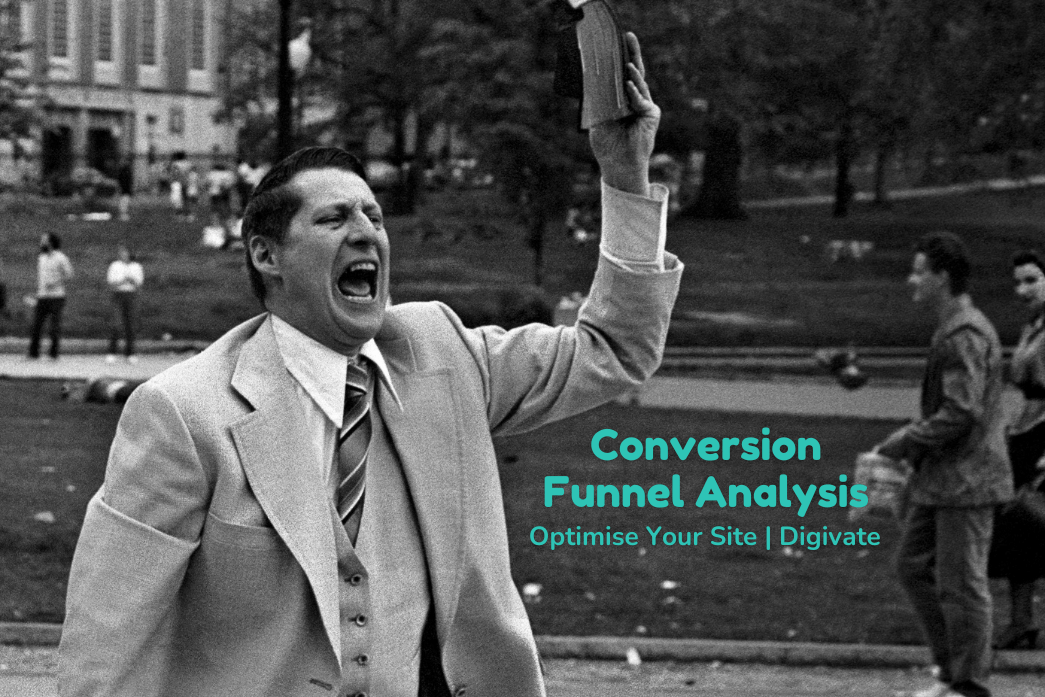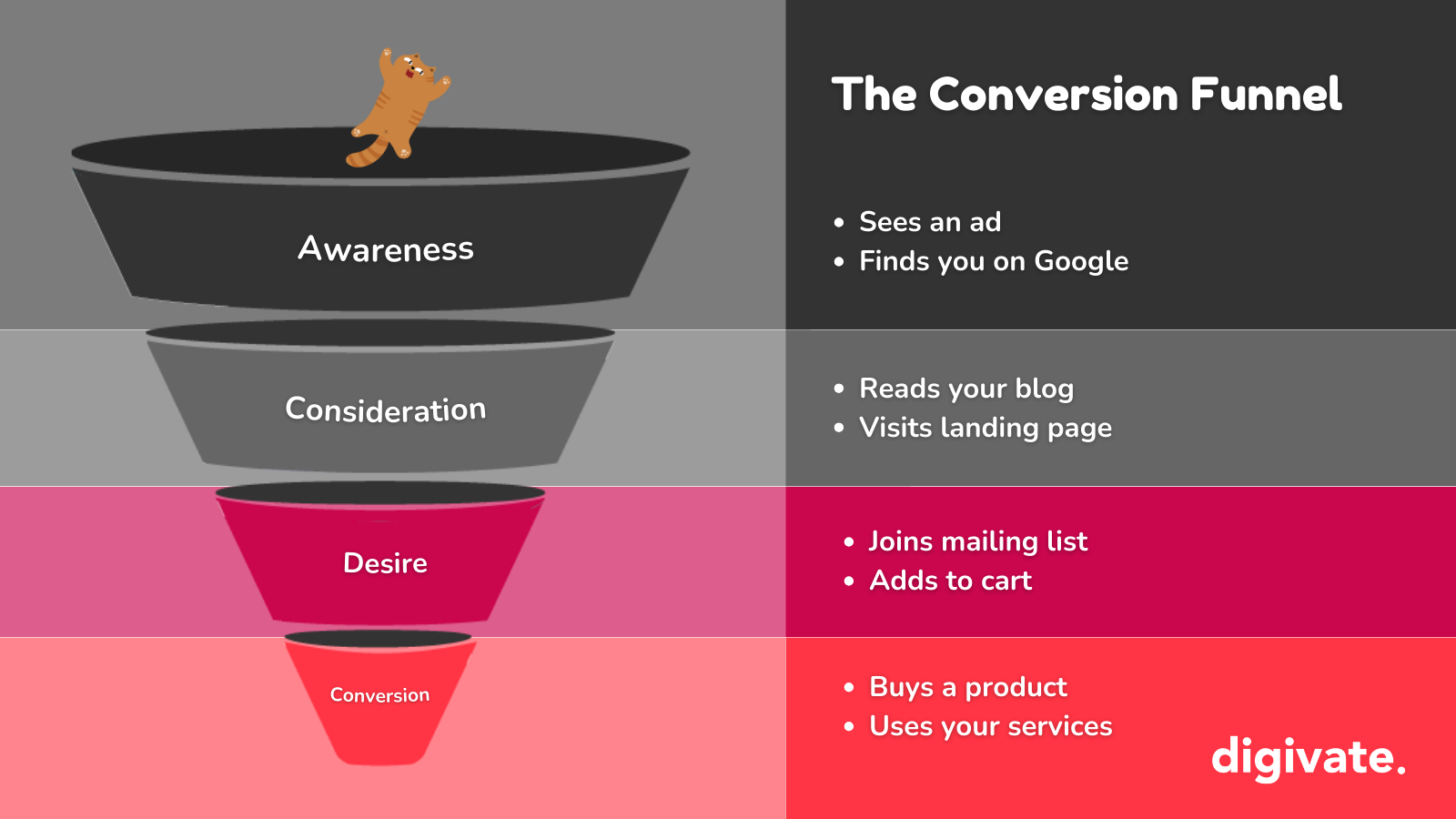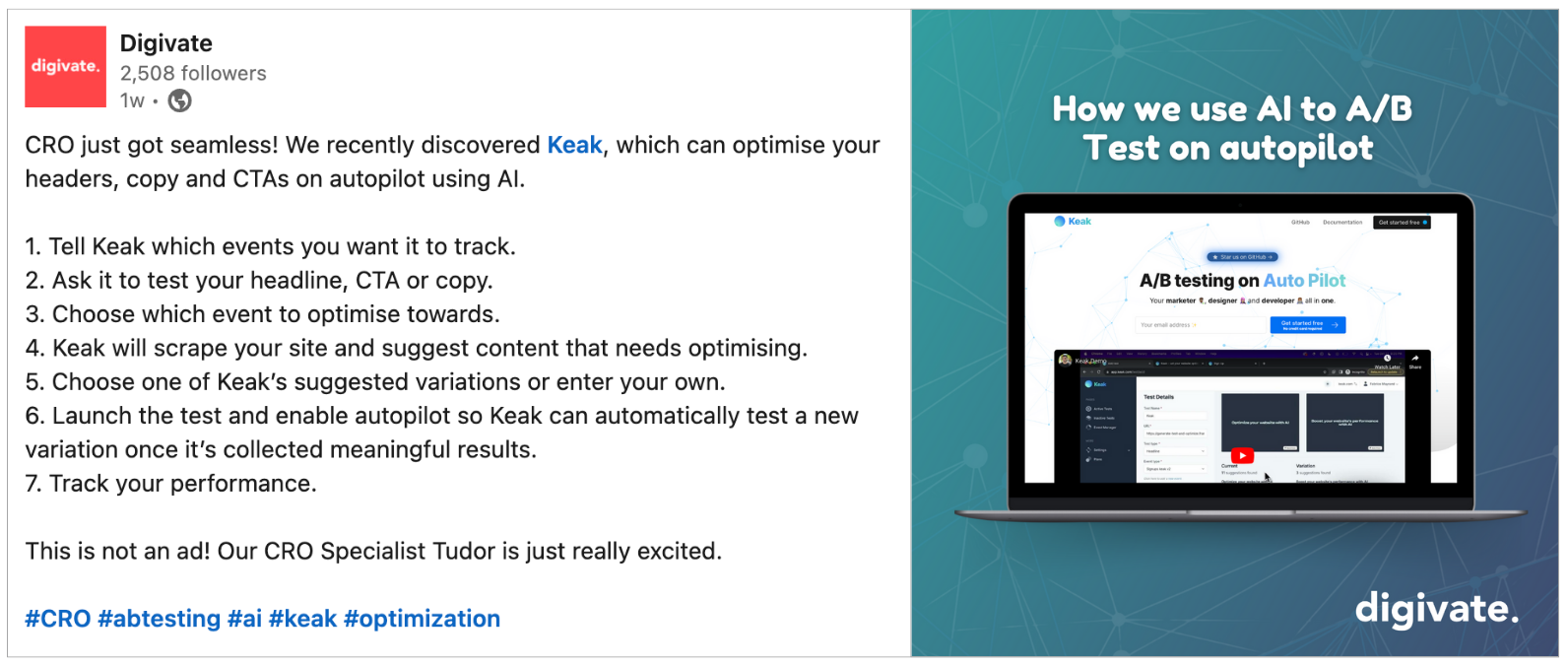
What makes someone use your business? It’s an eternal question with no single answer.
But this hasn’t stopped Conversion Rate Optimisation specialists and savvy marketers from dissecting each and every stage of the user journey.
In this blog post, we’ll explain how to analyse your conversion funnel. We’ll take you from the moment a customer becomes aware of your business to the happy sigh as they buy into what you’re offering.
The plan:
- Understand where your prospects drop off.
- Optimise every step in the conversion funnel.
- Increase your profits like crazy.
What is a conversion funnel?
A conversion funnel charts a user’s journey from their initial interaction with your business to the ultimate goal—conversion.
It’s rare for a user to land straight on your product page and buy. The journey from prospect to customer is a step-by-step process.
First, they watch five seconds of your minute-long Instagram reel. Then an influencer they follow recommends your product. The next time they see your search ad, they click it … but they bounce from the page. That’s until your remarketing campaign leads them to a different landing page where they travel all the way down and finally, beautifully, click to start a free trial. The user retention journey begins.

Each stage of the funnel – awareness, consideration, desire and conversion – demands meticulous analysis and optimisation. Find those pain points and help your prospects take a smooth ride through the funnel!
What is conversion funnel analysis?
Conversion funnel analysis is where data meets CRO (Conversion Rate Optimisation). It’s where you examine user behaviour from the top of the funnel to the bottom and identify opportunities for optimisation.
This can involve scrutinising key metrics, looking at heatmaps, and even chatting with customers.
A big part of marketing conversion funnel analysis is identifying drop-off points:
- Do your ads have a low CTR (click-through rate)?
- How long do people stay on your site after clicking a Google result?
- Do prospects sign up to your mailing list but stop engaging within weeks?
- How far down your landing pages do users travel?
- What percentage of users who ‘add to cart’ abandon the purchase?
By analysing the user’s journey with data from your CMS, email marketing and social media platforms and Google Analytics, you can fix the issues that make people drop off.
ECommerce conversion funnel marketing
It’s particularly important to analyse your conversion funnel in eCommerce. (Many marketers call the eCommerce conversion funnel the buyer’s journey.)
Did you know that 9 out of 10 shoppers read online reviews before making a purchase? According to Baymard Institute, 73% of abandoned carts stem from unexpected costs like shipping and taxes at checkout.
From social proof on your product pages to transparency in your delivery costs, it’s the little things that keep a buyer on track for conversion.

A story about sofas
The good people at SofaSofa had nailed the awareness and consideration stages of the funnel. But they were getting a lot of drop-offs between ‘desire’ and ‘conversion’.
We changed the layout of their basket page, added their Trustpilot score, revamped their shipping calculator and updated the cross-selling section to promote more relevant products.
Their conversion rate increased by 85% and they saw 115% more transactions. That’s a lot of sofas!
There was a lot of funnel conversion analysis that went into this project before we reached the A/B testing stage. Ultimately, though, it was some very simple optimisations that fixed the block in the funnel and achieved this success.

How to perform conversion funnel analysis
- Define your funnel stages:
Clearly outline the stages of your conversion funnel and the components of each stage. e.g. your awareness stage might involve search ads and organic social media while your consideration stage covers product pages and video content.
- Set clear KPIs:
Establish key performance indicators (KPIs) for each stage of the funnel. We’re talking metrics like click-through rates, the average time spent on each page, and of course the conversion rate.
- Implement analytics tools:
Use analytics tools like Google Analytics and CRO software such as Optimizely to track user behaviour and collect relevant data. You’ll need to set up goal tracking to monitor specific conversion actions.
- Analyse user behaviour:
Delve deep into the data to understand user behaviour at each stage. Identify points of entry, exit, and any trends or anomalies in your user interactions.
- Identify bottlenecks:
Look for areas of friction in the funnel. This might include confusing navigation or complicated forms that users can’t be bothered to fill out.
- Evaluate page performance:
Look at the performance of individual pages that play a key role in the user journey, from your homepage to category pages to products. Identify high bounce rates, low engagement, or pages with not-great conversion rates.
- Review traffic sources:
Check how much of your traffic comes from organic search, paid advertising, social media, and other channels. Then analyse the metrics of your lower-performing channels and optimise accordingly. You also might want to tweak which sources you put the most time and money into.
- Collaborate across teams:
Communicate your findings with your marketing, design, and development teams. Coordinate your efforts to address the issues and action improvements.
Conversion Funnel Marketing Tools
Check out our recommended tools for user behaviour insights and performance metrics:
Google Analytics: Google Analytics (GA4) provides in-depth data on website traffic, user behaviour, and conversions. It offers features like goal tracking and conversion tracking, which are essential for funnel analysis.
Keak: Keak is an AI-powered A/B testing tool that will scrape your site and tell you which headers and CTAs need optimising.

Hotjar: Hotjar combines analytics and feedback tools, offering features like heatmaps, session recordings, and surveys.
Crazy Egg: Use Crazy Egg to explore heatmaps, scrollmaps, and other visualisations which help you understand how users interact with web pages.
Optimizely: Optimizely is primarily known for A/B testing but also provides experimentation and personalisation features.
Our top conversion funnel optimisation tips
Follow these steps to optimise your conversion funnel effectively:
- Optimise your landing pages for clarity, relevance, and a seamless user experience. Ensure that the content aligns with expectations you’ve set up in the metadata.
- Simplify and streamline forms to reduce friction. Minimise the number of fields and clearly communicate the value of completing the form.
- Craft compelling and clear calls-to-action (CTAs). These usually start with a verb! Place your CTAs strategically – above the fold on landing pages (and at the bottom too!), on visually attractive buttons in email marketing campaigns, and towards the end but not in the last five seconds of videos.
- Improve the load speed of your key pages to avoid users getting frustrated and reduce bounce rates.
- Make sure your site has a responsive design that delivers a user-friendly experience across various devices. That means readable text and nice big buttons on mobile!
- Integrate social proof and trust signals to build credibility. This might look like a Google Reviews widget, a testimonials slider or an Instagram feed showing members of your target audience using the product or service.
- Experiment with exit intent pop-ups and other strategies to re-engage users who are about to leave the site. Offer discounts, additional information, or incentives.
- Conduct ongoing A/B testing to assess the impact of changes. Test different variations (two at a time!) and implement the optimisations that lead to the most conversions.
- Seek user feedback through surveys, reviews, and customer support interactions. Use this information to address authentic customer concerns.
How conversion funnel analysis can boost your business
By combining thorough user behaviour research with strategic conversion rate optimisation efforts, you can fix pain points and get your users flying through the funnel. Little changes here and there can multiply the chances of turning each prospect into a satisfied customer.
Looking for help analysing your conversion funnel? Our CRO experts offer a deep analysis of your funnel or a ‘Quick Wins Audit’. Get in touch now to find out more.



